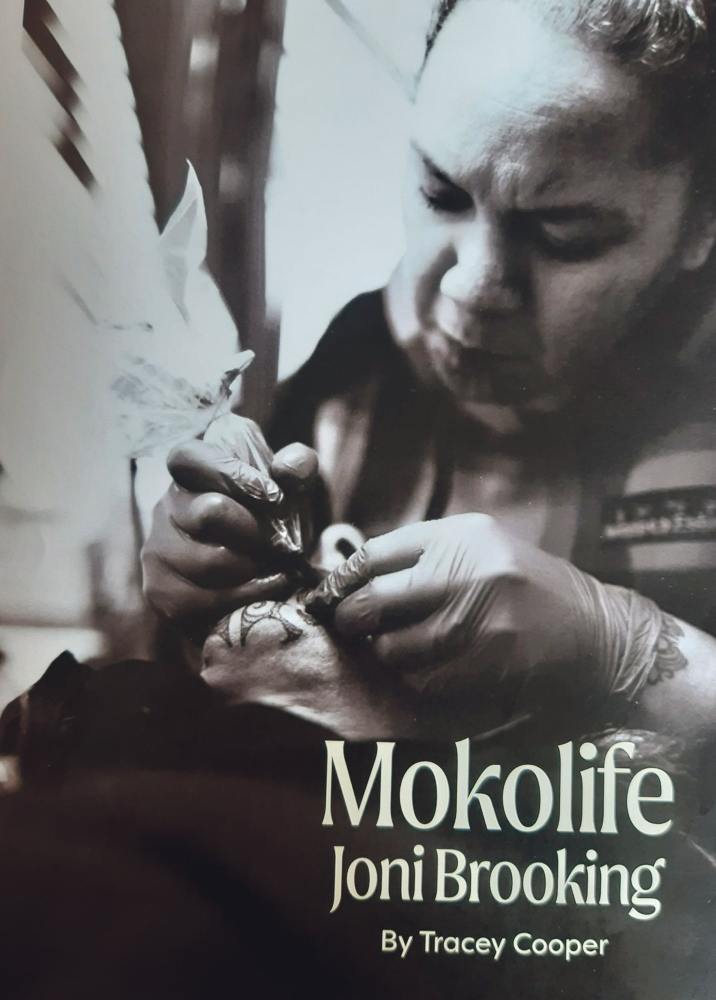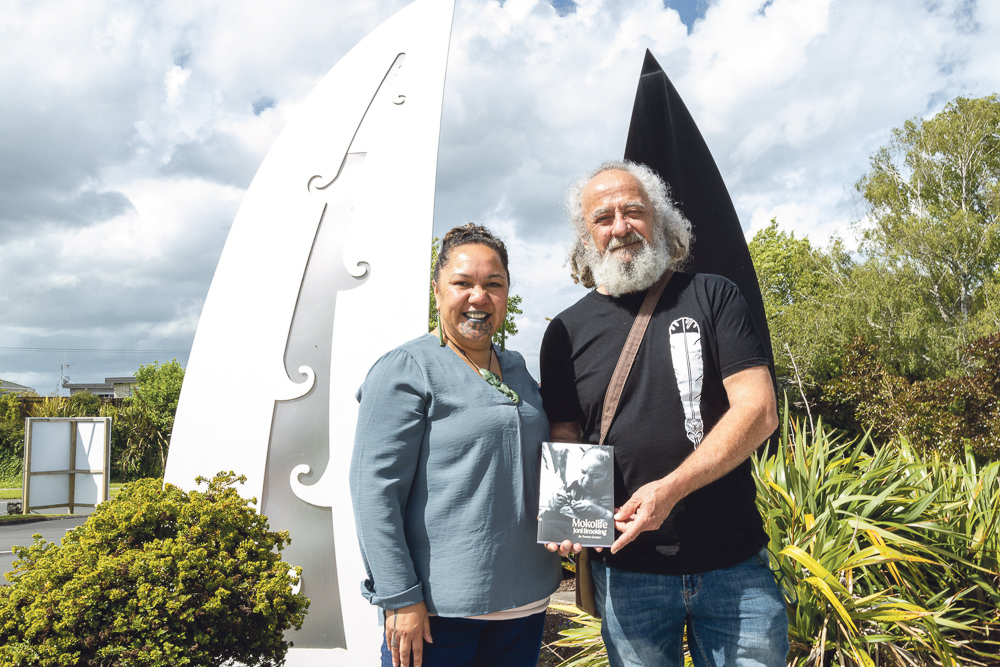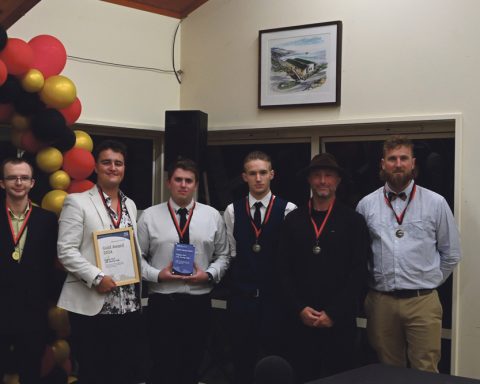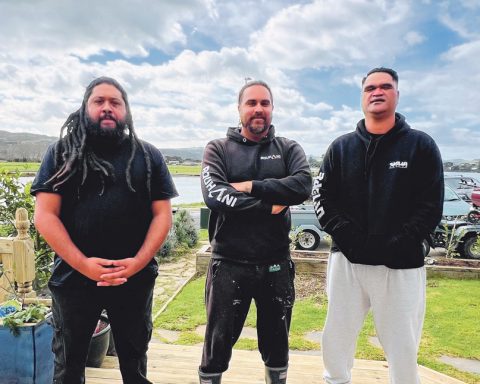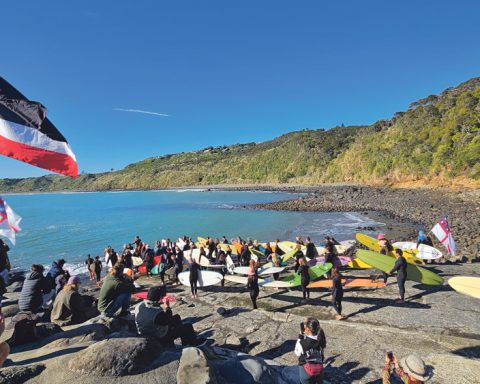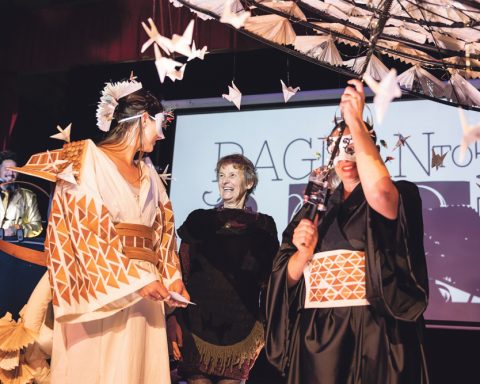The contributions of artist Joni Brooking to the revival of moko kauae is the subject of local author Tracey Cooper’s fist book Mokolife.
The pair became friends during their He Waka Hiringa – Master of Applied Indigenous Knowledge studies at Te Wānanga o Aotearoa. It was a match made in heaven; he needed a to write something for his community project and she wanted to tell the story of her journey with moko kauae.
That story has been brought to life following many hours of connection and conversation, establishing a lifelong friendship, and made Tracey realise how much joy he found in helping someone to achieve their own goal.
“I realised over the course of the masters that I get a lot of enjoyment from helping others achieve their goals, and even more so when doing that helps me to achieve my own goals.”
A former Waikato Times journalist, Tracey travelled to and from Te Tairawhiti, where Joni is based at Te Araroa, and over the course of two years attend mokopapa (wānanga which focus solely on facial moko) and undertook numerous interviews with some of the wāhine who had received their moko kauae from Joni, along with other leaders in the revival of moko kauae, particularly throughout Ngāti Porou and Te Whānau-a-Apanui.
The book tells the story of Joni’s beginnings as a ta moko artist, with mentors such as tohunga moko Mark Kopua and Sir Derek Lardelli, and the strong whānau foundations which help guide her in her practice.
“Joni is an amazing woman and it’s been an absolute privilege to spend so much time with her and her whānau, and to tell her story. She is driven by a deep desire to normalise moko kauae throughout Aotearoa and to educate people about this beautiful artform.”
As well as demystifying some of the myths around who is worthy of wearing the distinctive chin markings, the book also delves into the mythological beginnings of the artform and challenges many of the misconceptions around moko kauae.
But, more importantly, it is about the women who share what it means to wear the moko kauae; from the sense of empowerment it provides to the cleansing of trauma, and the reasons they came to have this significant and permanent traditional marking on their chin.
“While many of the wāhine I interviewed came to the decision to receive their kauae for different reasons, every single one of them talked about the self-confidence it gave them and the pride they had in wearing the markings of their tūpuna.”
While there is still an undertow of racism and ignorance that has impacted some of the women, none have regretted receiving the moko kauae.
“I love seeing wāhine wearing their kauae with pride. Seeing kauae is becoming more commonplace around the Waikato, but in Te Tairawhiti, it’s almost the norm for wāhine to receive their kauae, and many are doing it at a much younger age. They grow up seeing their mothers, sisters, aunties wearing kauae, and it becomes and entirely normal thing to do, as it should be.”
Mokolife was launched in Gisborne late last year and several hundred copies have been sold so far. It can be purchased for $50 from the i-Hub or email traceyrcooper@gmail.com.
